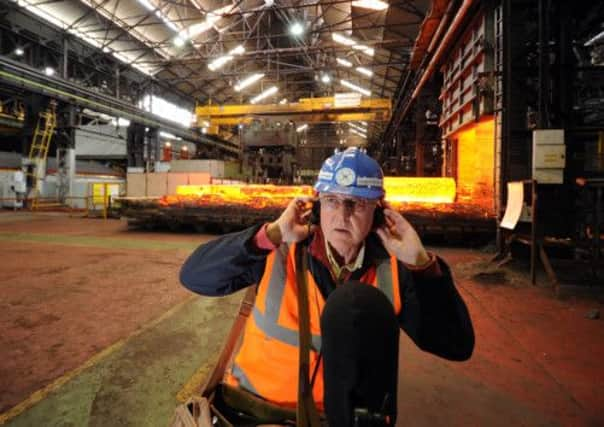Sound recordist putting city on the sonic map


THE last time I saw Chris Watson he was crouched down listening intently through his headphones to the metallic rhythms pulsating through the foundry.
That was back in May when I joined him on a guided tour of the historic Sheffield Forgemasters site, where engineers forge the city’s famous steel. He was recording the sounds for an ambitious project to “map” Sheffield’s soundscape for a new exhibition, Inside the Circle of Fire, at the Millennium Gallery.
Advertisement
Hide AdAdvertisement
Hide AdWatson spent more than 18 months recording his home city’s signature sounds, from the songs of curlews on the outlying moorlands and peregrine falcons nesting amongst the urban sprawl, to the roar of the terraces at Bramall Lane and Hillsborough and its thundering industrial furnaces.
Once he had gathered all the different sounds he then began the painstaking job of editing them. He invited people to send in their own sounds to form part of the finished piece and was surprised how many people responded. “I had an incredibly large number of contributions sent in by people which was great because I wanted it to be as up to date as I could make it,” he says.
The sonic installation is being played through a specially-designed wall-to-floor sound system and has already proved popular since opening earlier this month.
For Watson, it’s been a trip down memory lane. He grew up in Totley, near Derbyshire, and started recording sounds when he was just 12 in his parents’ back garden. He went on to co-found Sheffield electronic pioneers Cabaret Voltaire before establishing himself as one of the UK’s most eminent sound recordists, winning a Bafta for his work on the BBC’s The Life of Birds.
Advertisement
Hide AdAdvertisement
Hide Ad“One thing I discovered was that Sheffield is a city of rivers. I wasn’t aware that the sound and rhythm and movement of water through the city played such an integral role,” he says.
Many people might think that the white heat of industry just produces loud noise, but Watson disagrees. “Initially I was overwhelmed by the noise at the foundry, but then you start to pick out particular sounds and I realised it was actually very textural and rhythmical.”
He has captured a host of sonic motifs in the finished piece and admits the hardest job was deciding what to leave out.
“I could have recorded the dawn chorus of birdsong over the moors for 40 minutes and still not captured it in its entirety. Listening to all the elements there were a lot of different sequences so my job then was to find out what worked.”
Advertisement
Hide AdAdvertisement
Hide AdBut what makes Sheffield sound different from other cities?
“Once you take away the sounds of traffic which you get in any town or city, you begin to hear the real sounds of the city. There’s the sound of water which pervades through the city and there are nostalgic sounds like the cathedral bells as well as modern ones like buskers on the streets.”
Watson wants people who visit the exhibition to immerse themselves in what he calls the city’s “songs.”
“They will recognise some familiar sounds and perhaps some unusual ones they hadn’t noticed before. But I hope they will come with their ears open and sit down, or walk around, and just listen to the music of their city.”
Inside the Circle of Fire, Sheffield Millennium Gallery, to February 23, 2014.